This post is a little late, but in mid-October, 7 students and I traveled to Savannah, GA to attend and present at SERMACS. I was able to give two invited talks – one on Joseph and Hyejin’s boronic esters project and another on empowering undergraduate students through research. As I watched my remarkable students present their posters, I could see their enthusiasm, knowledge, and empowerment. It was a wonderful trip. Below you will find photos and recollections from each student. Enjoy!
~jap

Joseph McEachon (CHEM ’20)
Presentation: Theranostic Microcapsules For Imaging Ultrasound-Triggered Drug Deliver
Presenter: Eugenia P Kharlampieva – University of Alabama at Birmingham.
Summary:
Working on a pro-drug project aimed at reducing side effects, I am naturally interested in new ideas relating to drug delivery. While at SERMACs 2019, I attended a presentation by Dr. Eugenia P Kharlampieva on ultrasound-triggered drug release from MRI visible polymeric microcapsules. In summary an encapsulated drug can be selectively released in the body through ultrasound irradiation. In order to visualize the location of the drug within the body, iron oxide nanoparticles were attached to the microcapsule to function as a contrasting agent. Combined, this allows for imaging directed activation of a systemically released encapsulated drug within the body. This method can be optimized for patient delivery in three ways: power (irradiation), time (real-time and gradual release), and capsule thickness.
The beginning of the talk focused on the design of the encapsulating molecules and making them sensitive to stimuli- in this case ultrasound irradiation. The application of this therapy was used to encapsulate and subsequently release pancreatic islet cells in mice for a potential diabetic treatment. Prior research shows that transplanting islets (clusters of pancreatic cells) can reverse diabetes. However, pancreatic islets generally come from accident victims and there exists a limited timeframe for viable surgical transplant. The idea presented is a new minimally invasive therapy involving islet encapsulation. This not only increases the available time frame for which they can be transplanted, but also camouflages the islets from the body’s immune system. This eliminates the need for invasive surgery and lifelong immune suppressors after surgery. Diabetic patients are already at a high risk and immune suppressors only add to the comorbidity associated with diabetes!
Not only did this presentation resonate with my overarching research goal, but a main component of my research, reactive oxygen species (ROS), was even mentioned in the talk during the “camouflaging” of the islets from the immune system.


Lucy Zhou (BIOL ’21)
My favorite talk was the presentation by Dr. Ostrov on the structural selection of immunomodulatory HLA binding small molecules in the “structure-based drug design” category. The talk was about small molecules binding to HLA proteins to inhibit T-cell recognition and response, which could be used to treat early onset diabetic patients. Dr. Ostrov first introduced the medical importance of HLA genes that it controls autoimmune responses and that these genes encode proteins to bind peptides and present antigens to T cells. The research goal is to have small molecules bind to HLA proteins to inhibit T-cell antigen recognition receptor and prevent T cell recognition. Through molecular docking site selection, screening small molecules, testing the selected compounds in cellular assays and binding assays, testing in mouse, and eventually clinical trials, Dr. Ostrov’s group had successfully discovered a small molecule drug that could bind to the HLA proteins called methyldopa. This drug could inhibit antigen-specific T-cell receptors, and could be successfully used to treat diabetic patients of new onset. The goal is to use this drug to prevent Diabetes in high risk people.
I really enjoyed this talk because the entire research procedure is really similar to the project that I am currently working on, which is about small molecules binding to a large protein MEMO1 to inhibit breast cancer. It is interesting to see the profound impact of this study and the positive effects of this small drug on chronic diseases. I find the result and conclusion of this research to be especially encouraging and inspiring to me, as it showcases the importance of structure-based drug designs. Sometimes the research process in our project does not always generate positive results, but through trials and errors we will eventually move forward in the project. This research also lays out the future directions and promises of our project, which makes me really excited for every step in the progress.
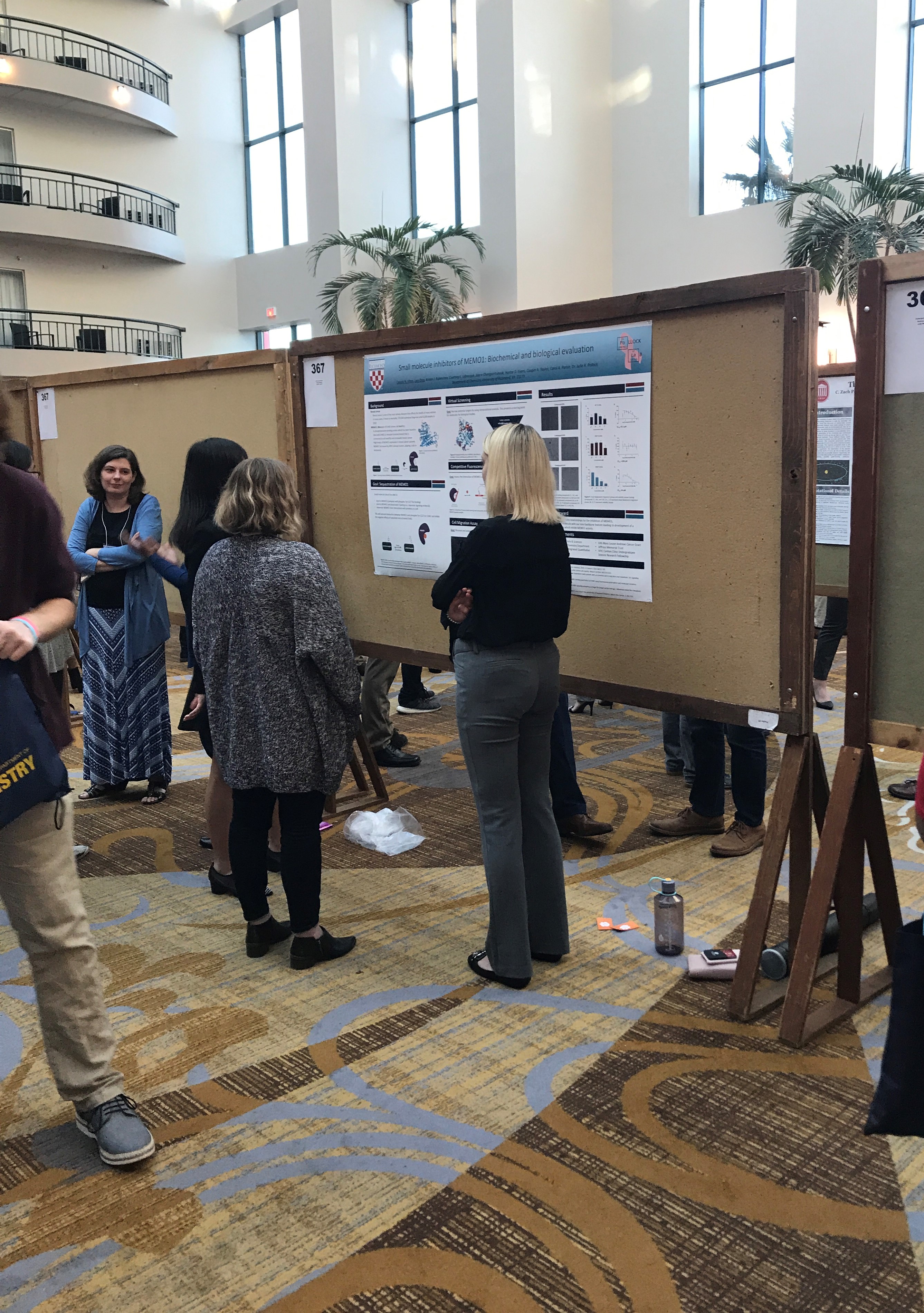
Cassidy Hilton (CHEM ’20)
The talk that I found most interest at the SERMACS convention this year was one given in the “Modern Issues for Women in Chemistry” segment. The presenter was Christine Theodore from the University of Tampa on “Finding your voice and taking up space”. She spoke about how to respectfully voice your opinions as a woman in Chemistry. This talk really resonated with me, as she addressed issues such as how to respectfully say no to unreasonable requests. She encouraged speaking up when it is necessary to and emphasized how these circumstances extend to situations outside of science, as well.
I found this talk particularly applicable to me because I am planning to enter the pathology field, which is typically male dominated. It is important for women to find their voice, particularly in male dominated fields. In order to develop good relationships with pathologists, I will need to learn how to respectfully find my voice and take up space as a pathologists’ assistant, and this talk was very beneficial in regard to these topics.
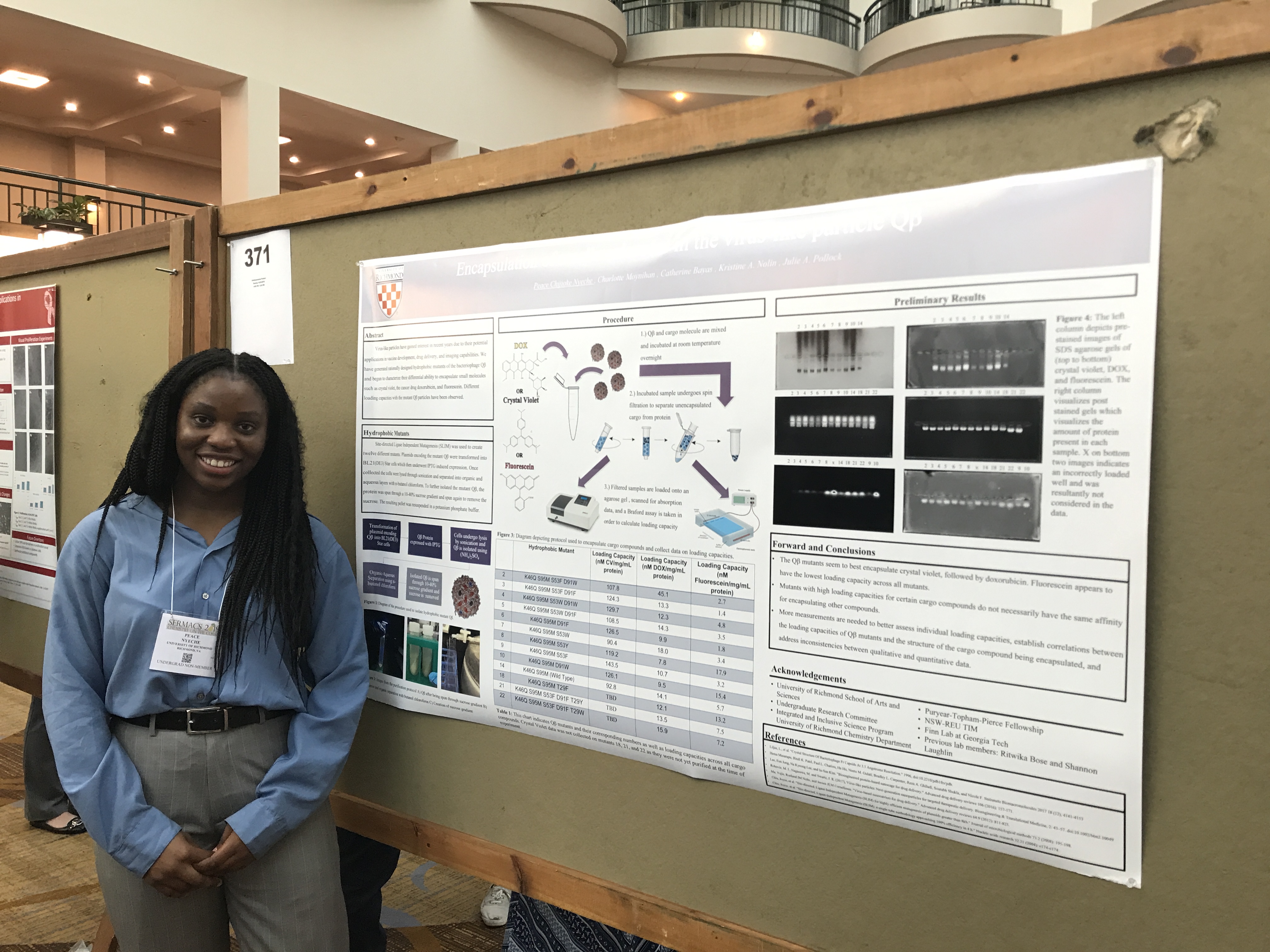
Peace Nyeche (CHEM ’21)
When I decided to pursue chemistry, with the long term goal of becoming a chemical engineer, I did so believing it was a path that would introduce me to a lot of opportunities. My first Southeastern Regional Meeting of the American Chemical Society in Savannah, Georgia this year, reinforced this belief. It was my first time on a plane since I was eight years old, my first time presenting our research off campus, and the first time I realized just how many opportunities chemistry as a practice has to offer.
The Diversity: Opportunities, Scholarships, Fellowships, & Internships panels and talks were especially eye opening. The session started with panelists sharing stories about how personal mentorships transformed their journeys as students and scientists, and how they are now able to do the same for their mentees from communities underrepresented in science. Every speaker introduced a variety of REUs, and programs like the ACS Bridge program, and NSF funding available for underrepresented scientific undergraduate students. It’s hard to summarize the excitement each speaker brought. Whether they were talking about their personal experiences, their research, or the many opportunities available in chemistry for students like myself, their excitement was contagious and I am definitely still carrying it with me.
When it came to presenting myself, I was so nervous that I didn’t anticipate being as excited as I was to do so. On campus I have the comfort of presenting in front of peers and professors that know me, however, the added pressure of presenting to complete strangers made me realize just how excited I was to talk about the work we’ve been doing. I wanted so badly for everyone who asked about my poster to understand how far we’ve come from not knowing whether our protein were capable of encapsulation in the first place, to now focusing on quantifying their loading capacities. In the lab, it’s easy to focus on how much hasn’t been done yet, but being able to present to an audience without this context made me realize that we are in fact making good progress and I am even more so excited to continue doing so.
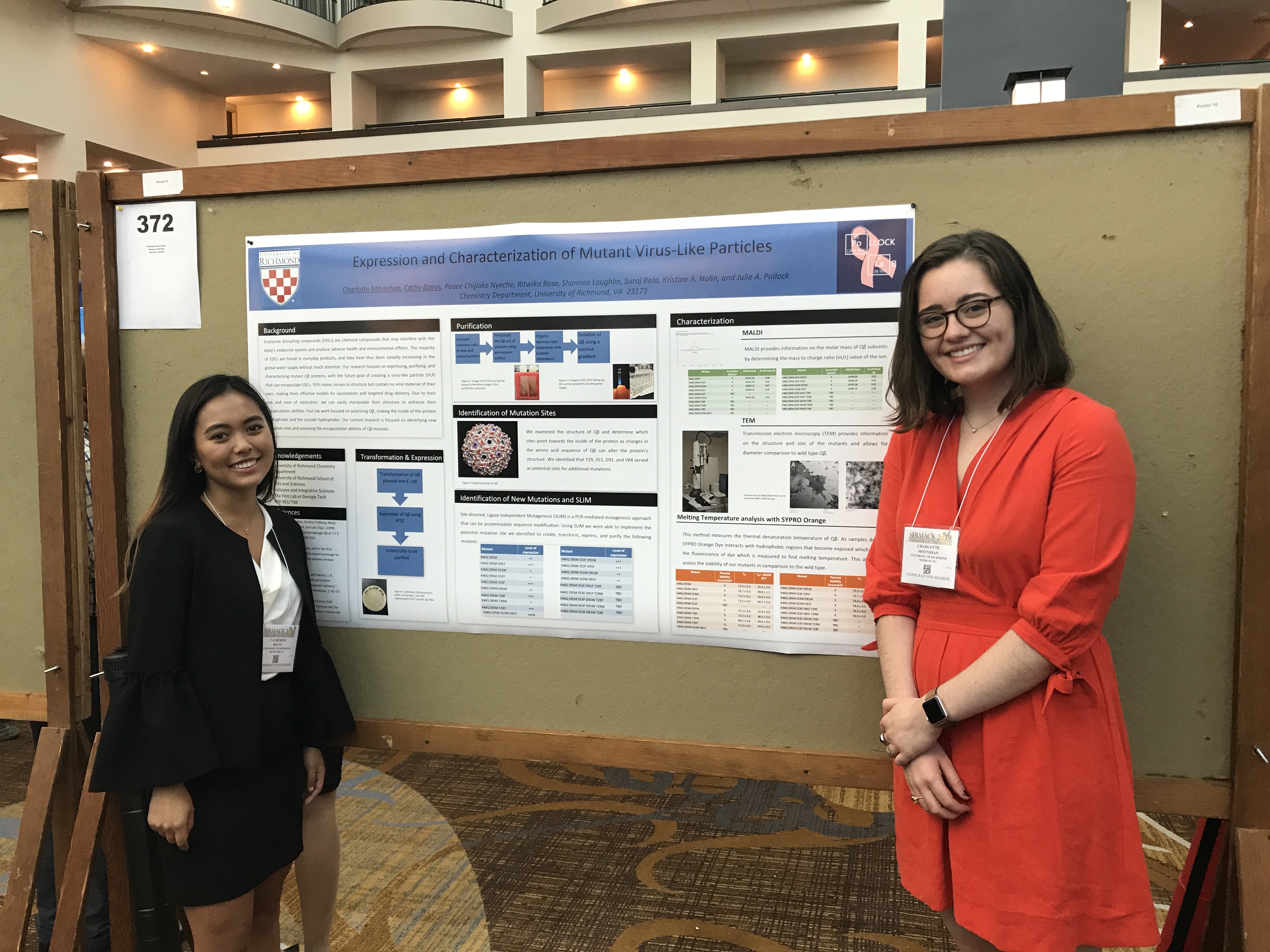
Cathy Bayas (’22)
This was my first time attending SERMACS (or any large conference), and I can’t stop boasting about my amazing experience there! To my surprise, choosing which talks I wanted to attend was more challenging than presenting our research to complete strangers who are long veterans in the field of Chemistry. I was able to narrow down which talks to attend based off my interests in Biological Chemistry and Medicinal Chemistry. My favorite talk of the whole conference was the one given by Dr. Melissa Srougi from High Point University. Her research focused on the development of an NQO1-bioactivatable compound that can induce cell death in BRCA1/2 mutant cells. BRCA1/2 are tumor suppressing proteins that are required for homologous recombination and mediated DNA repair. Thus, individuals with BRCA1/2 mutations have a higher chance of developing breast and ovarian cancer due to the overexpression of NQO1. Dr. Srougi’s lab found that IB-DNQ2, a B-lapachone derivative, can be metabolized by NQO1 to increase the frequency of single-stranded breaks thus increasing cell death in BCRA1/2 mutants. Beta-lapachone, a drug used in folk medicine and initially studied for its anti-malarial properties, can be bioactivated to be a toxic compound. Dr. Srougi’s lab also proposed a dual-mechanism drug that combines a PARP inhibitor with IB-DNQ to increase cytotoxicity and DNA damage. They found that the PARP combination therapy not only induces tumor cell death, but it also gives more specificity for BRCA1/2 deficient cells.
I really enjoyed Dr. Srougi’s talk since she communicated her research very clearly and in such a manner that was easy to follow even without expertise in her field. I also appreciated the real-world application behind her research. Although the work I do with Dr. Pollock on VLPs is far off from developing a cure to cancer, Dr. Srougi’s research integrates biological principles with Chemistry in the same manner that our research does. She even reminded me of Dr. Pollock herself in the way that she highlighted each one of her student’s accomplishments in her lab. Like Dr. Pollock, she is just as committed to the growth of her students as she is to her research. Already pumped for SERMACS 2020!
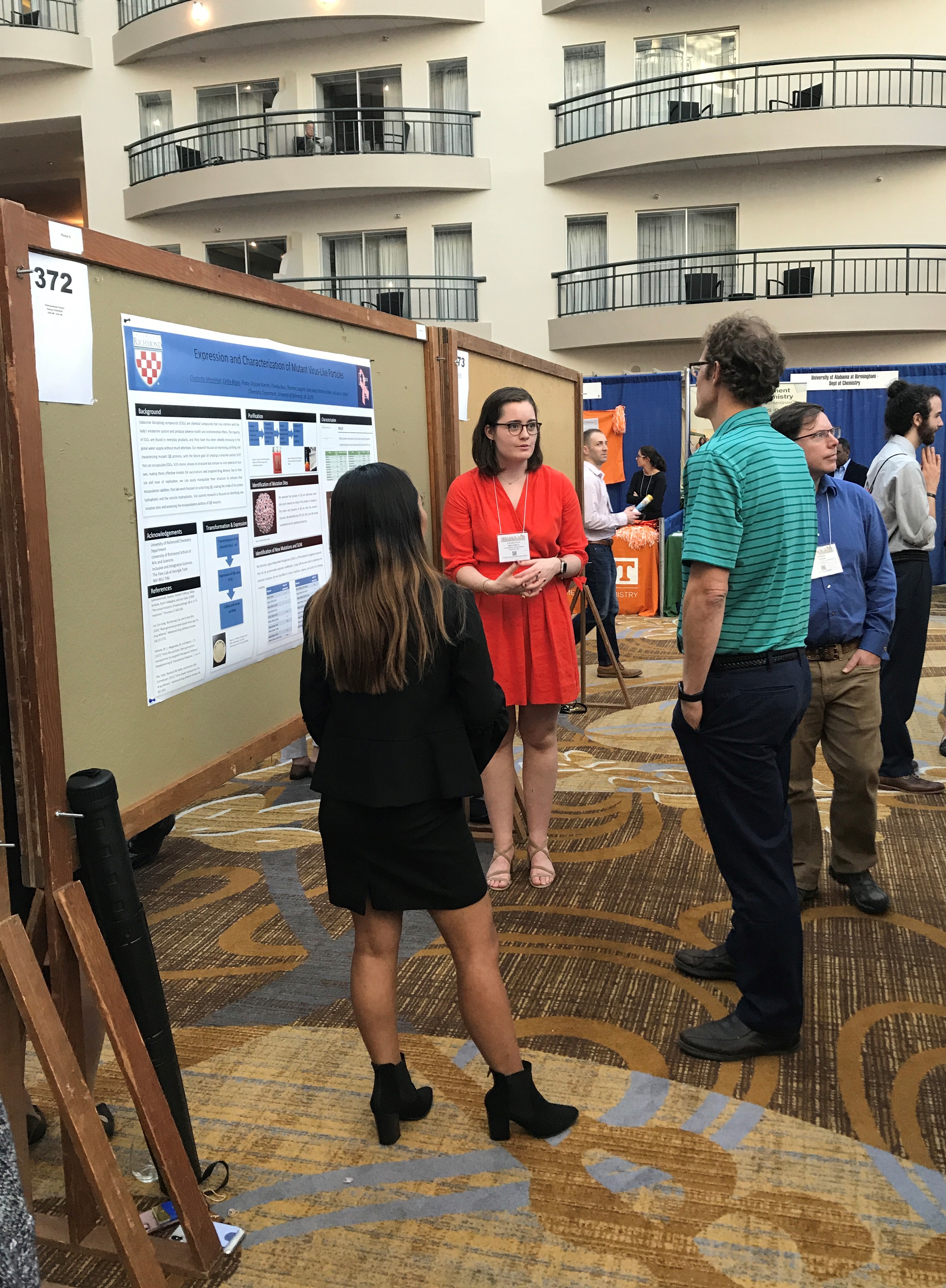
Charlotte Moynihan (’22)
When I attended the SERMACS Conference in late October, I was able to hear really amazing talks from all areas of chemistry – biochemistry, medicinal chemistry, organic chemistry, and many more. However, the talk that stood out to me most was from a panel discussing women in chemistry. Dr. Christine Theodore from the University of Tampa touched on a topic that I have personally felt and many other women in that room and across the sciences and all disciplines have faced – imposter syndrome. As a woman, particularly in a male-dominated field like chemistry, it can be easy to feel like you may not belong in that environment or don’t deserve your position the same way others do.
Dr. Theodore encouraged those of us in the audience to actively combat those feelings and not be afraid to “claim your place”. She reminded us that nothing has been given to you; that you earned it and deserve to be in that place. Speaking from her own personal experience getting her PhD, Dr. Theodore discussed how easy it is and tempting it can be to overextend ourselves. As she said, no is a complete sentence and we shouldn’t be afraid to respectfully say no to and stand up for ourselves. While these pieces of advice may not seem revolutionary, they are lessons I remind myself of and things I believe are helpful to women in the sciences, women in any field, or anyone who may feel they don’t belong. Even presenting my research at SERMACS I was intimidated. Looking around at other students and faculty presenting, I felt way out of my league and that they definitely knew way more than I did. Hearing Dr. Theodore speak both validated the way I had been feeling and encouraged me to stop doubting myself and claim my place as a woman in chemistry.
Makayla Callendar (CHEM ’22)
Presenter: Dr. Jalisa H. Ferguson UNC Asheville- Encouraging Success and access to opportunities for women and people of color at a primarily white undergraduate institution.
Dr. Ferguson’s presentation was within a series of presentations regarding current issue for women in chemistry. Dr. Ferguson set out to create programs that would foster success and increase access to opportunities for students identified as women and people of color at predominately white intuitions. She first looked at why some women and students of color were able to push pass the social and academic barriers at these intuitions while others succumbed to the pressure. The key was persistence and this was a major component in success for most students facing adversity. Ferguson and her team identified three factors that influence persistence: capacity, interest, and belongingness. In order to cultivate these factors into the lives of women and students of color, they held events open to the entire student body on campus. The events focused on preparation for life after college and participating and thriving in undergraduate research. They took feedback surveys in which student were anonymous with the exception of their self-identified race and gender. She found that with each event there was a persistent presence of their target group. They also observed positive feedback from student’s identified as white males who appreciated the perspective they got from the events.
Ferguson’s push surrounded this idea of diversity with inclusion. This really resonated with me as student who is a woman and African American at the University of Richmond which has a predominately white student body. The programs and opportunities that I have been offered with SMART and URISE focused on the same key influential factors to encourage students like me. My summer of research has also instilled a trust in my abilities to succeed in a science driven field. It is important for intuitions to support students and continue to create and push these initiatives on campuses.



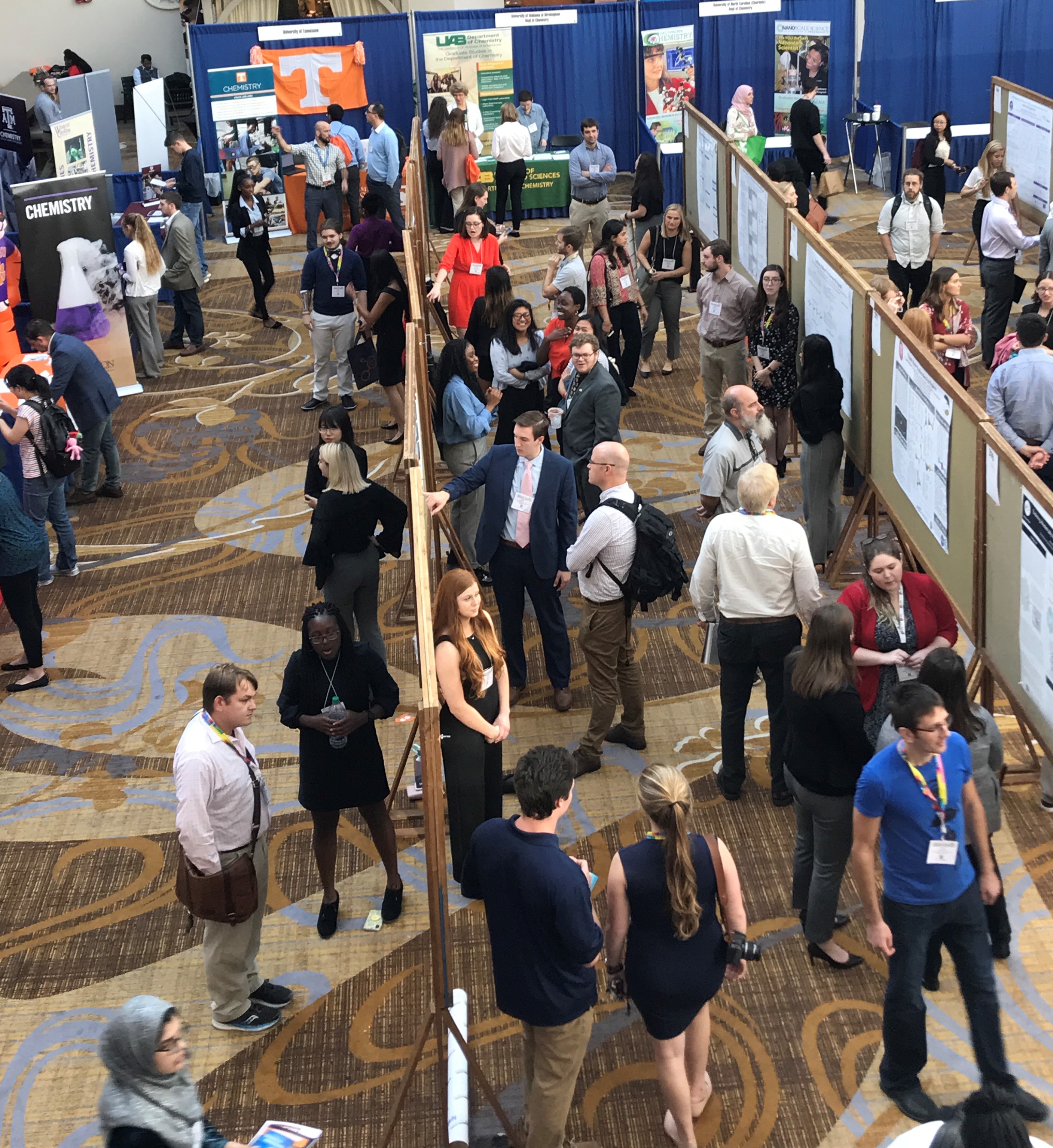
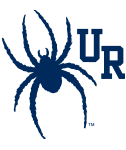
Recent Comments